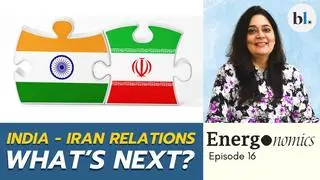After hearing good things about mutual funds, many new investors take the next step of trying to choose them. That’s where they trip up. Faced with over 1400 funds that are open for investment, new investors can find it completely bewildering to choose the right fund. But the problem of choosing the right fund need not paralyse you if you are a new investor. If you don’t know which funds to choose, you can simply buy an ETF tracking a broad market index or an asset class.
ETFs are exchange-traded funds that simply copy an existing index or benchmark. So a Nifty50 ETF will let you track the basket of stocks that make up the Nifty50 index. A gold ETF will let you track gold prices in India in rupees. A 10-year gilt ETF will help you track the performance of the 10 year government security.
ETFs vs open-end funds
Before buying ETFs, you need to understand how they are different from open-end mutual funds. In open-end MFs, the fund usually owns a basket of stocks, bonds or other assets selected by a fund manager. The fund declares the NAV (net asset value) of its portfolio every day. To invest, you approach the mutual fund house directly or via a distributor or execution platform, and buy units at the latest NAV. When you want to sell it, you again approach the same fund house or intermediary and sell it at the prevailing NAV. Open-end funds can be active, where the fund manager chooses securities to own, or passive, where the fund simply tracks an index or asset.
Watch: Question of Money, Episode 34: Old vs New Tax Regime Differences
ETFs, unlike open-end funds, usually do not have a fund manager taking calls on what to buy or sell. They are wholly passive and simply own a basket of stocks that figure in an index or an asset like gold or silver.
They are listed on the stock exchanges. Retail investors wanting to buy them need to buy them from the exchange at the latest quoted price, not at the NAV. So the important thing to note here is that the traded price of ETFs may be different from its NAV. You need a demat account to invest in ETFs, while you don’t need one to invest in open-end mutual funds. Open-end funds allow SIPs because you can set up monthly investments directly with the fund house. In ETFs, you usually cannot set up SIPs and need to buy from the market every month.
How ETFs work
To start a new open-ended fund, a fund house floats a new fund offer and gets retail investors to subscribe to units. ETF creation is a different process where institutional investors are invited to exchange a basket of securities or assets for a large block of ETF units. For instance, if a fund wants to launch a Nifty50 ETF, it will get institutional investors to exchange baskets of Nifty shares for units in its Nifty ETF. These units are then listed on the exchanges and traded. Retail investors can buy ETF units only from the exchanges, while institutional investors can buy them directly from the fund house by exchanging securities for creation units.
Because there are only a limited number of ETF units available, market prices of these units can stray away from NAV. ETFs that are much in demand can see market prices move to a premium over NAV and those that are not favoured can sink into a discount. It is important for you not to pay a stiff premium over NAV when buying ETFs because the NAV represents the true value of the portfolio.
Types of ETFs
There are ETFs available in the Indian market to track different indices and asset classes. Gold and silver ETFs allow you to earn returns from gold and silver in Rupee terms. There are a host of ETFs tracking broad market indices, such as the BSE Sensex, Nifty50, Nifty100, Nifty Midcap150 and so on. There are also ETFs tracking sectoral or thematic indices like the Bank Nifty, Nifty Low Volatility Index, Nifty Quality 30 and so on. For those keen on debt investments, there are indices tracking the performance of 10-year and 5-year government security. So if you’re a new investor, you can build an asset-allocated portfolio out of ETFs alone: For instance, invest 50 per cent in a Nifty100 ETF, 40 per cent in a 5 year gilt ETF and 10 per cent in a gold ETF.
(Host: Aarati Krishnan, Producer & Edits: Anjana PV, Camera: Bijoy Ghosh and Amitha Rajkumar)
Also watch the previous episodes of Question of Money here: Question of Money playlist







Comments
Comments have to be in English, and in full sentences. They cannot be abusive or personal. Please abide by our community guidelines for posting your comments.
We have migrated to a new commenting platform. If you are already a registered user of TheHindu Businessline and logged in, you may continue to engage with our articles. If you do not have an account please register and login to post comments. Users can access their older comments by logging into their accounts on Vuukle.